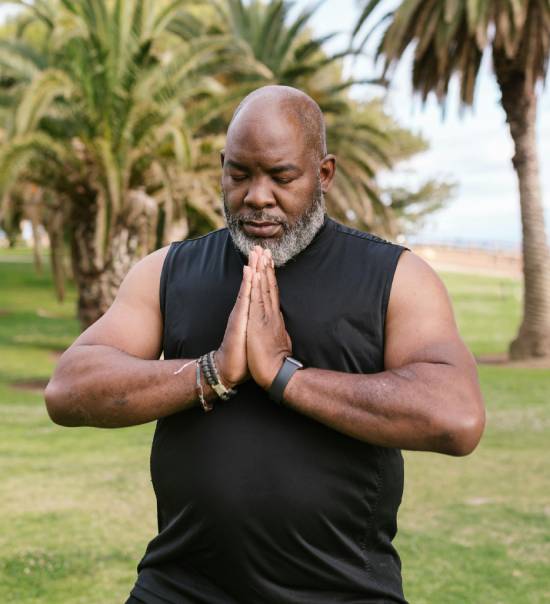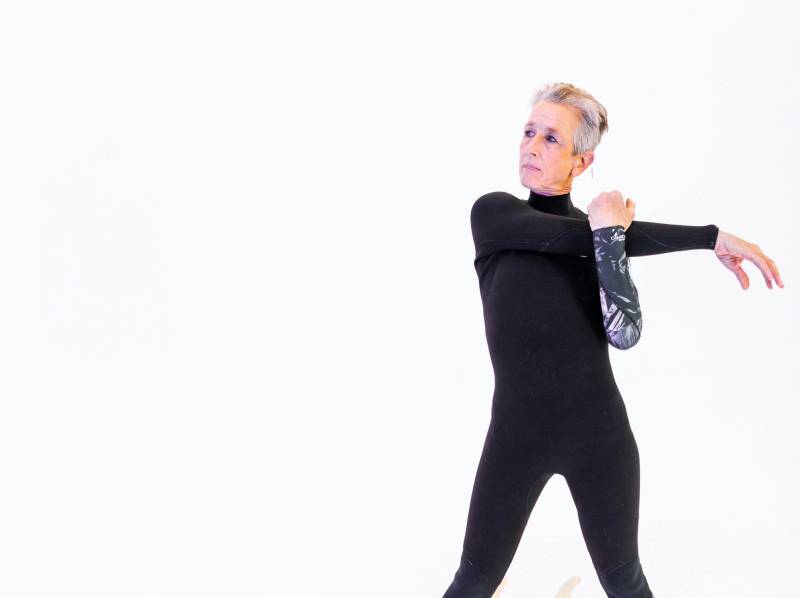As we age, maintaining good balance becomes increasingly important for overall health and well-being. Falls are a common concern among seniors, with serious consequences on their independence and quality of life. That’s why incorporating balance exercises and training programs into their routine is crucial for seniors to stay strong and steady.
In this article, we will explore the top balance exercises and training programs designed specifically for seniors. From simple leg lifts and toe stands to more challenging activities like tai chi and yoga, these exercises aim to improve strength, flexibility, and stability. Not only do they help prevent falls, but they also enhance coordination and promote better posture.
With guidance from trained professionals and adaptive equipment, these programs provide a safe and effective way for seniors to improve their balance and reduce the risk of injury. Whether you are a caregiver or a senior looking to maintain your independence, incorporating these exercises into your daily routine can make a significant difference in your life.
So let’s dive in and discover the best balance exercises and training programs to keep seniors strong, steady, and confident in their own abilities.
The importance of balance for seniors
Balance is an essential aspect of physical function, especially for seniors. It allows individuals to maintain an upright position, walk safely, and perform daily activities with confidence. Unfortunately, as we age, our balance tends to decline due to various factors such as muscle weakness, reduced flexibility, and changes in sensory perception.
Maintaining good balance is essential for seniors as it helps prevent falls and related injuries. Falls can have severe consequences for older adults, leading to fractures, hospitalizations, and a loss of independence. According to the Centers for Disease Control and Prevention (CDC), falls are the leading cause of injury among older adults, with one in four people aged 65 and older experiencing a fall each year.
Balance exercises play a crucial role in reducing the risk of falls by improving muscle strength, coordination, and stability. These exercises help seniors maintain their balance and react quickly in situations that could otherwise lead to a fall. By incorporating balance exercises into their routine, seniors can enhance their overall physical and mental well-being.
Common Causes of Balance Issues in Seniors
Several factors can contribute to balance issues in seniors. One of the primary causes is age-related muscle loss, also known as sarcopenia. As muscles weaken, it becomes more challenging to maintain stability and control. Additionally, changes in vision and proprioception, the body’s ability to sense its position in space, can also impact balance. Other factors include certain medical conditions, medication side effects, and environmental hazards.
1. Inner ear problems: The inner ear plays a vital role in maintaining balance. Issues such as Meniere’s disease or vestibular neuritis can cause dizziness and imbalance.
2. Medications: Certain medications can affect balance and increase the risk of falls.
3. Muscle weakness: Lack of physical activity and muscle strength can lead to balance problems.
4. Neurological conditions: Conditions such as Parkinson’s disease or stroke can affect balance and coordination.
5. Vision problems: Poor vision or changes in vision can impact balance and increase the risk of falls.
Understanding the underlying causes of balance issues is essential in designing effective balance exercises and training programs for seniors.
Benefits of balance exercises for seniors

Incorporating balance exercises into a senior’s routine offers numerous benefits. Firstly, these exercises help strengthen the muscles that support balance, improving overall stability. They also enhance flexibility, allowing for a wider range of motion and better control of movements. Balance exercises improve posture and body alignment, reducing the risk of falls and related injuries. Furthermore, these exercises can boost cognitive function, as they require concentration and focus.
Incorporating balance exercises into a senior’s routine offers numerous benefits for their physical and mental well-being. Here are some key advantages:
1. Prevents falls: Balance exercises help improve muscle strength and coordination, reducing the risk of falls and related injuries.
2. Enhances stability: Regular balance exercises promote better stability, allowing seniors to navigate their surroundings with confidence.
3. Improves posture: Balance exercises help seniors maintain proper posture, reducing the strain on their joints and muscles.
4. Increases flexibility: Many balance exercises also involve stretching, which helps improve flexibility and range of motion.
5. Boosts mood and cognition: Engaging in physical activity, including balance exercises, releases endorphins and promotes mental well-being.
By incorporating balance exercises into their daily routine, seniors can experience these benefits and enjoy an improved quality of life.
Types of Balance Exercises for Seniors
There are several types of balance exercises that seniors can incorporate into their daily routine. Standing exercises are a popular choice, as they simulate real-life situations and challenges. These exercises include activities like single-leg stands, heel-to-toe walking, and side leg lifts. Seated exercises are also effective for seniors with limited mobility or balance impairments. These exercises focus on improving core strength, stability, and posture.
Top Balance Exercises for Seniors – Standing Exercises
1. Single-leg stands: Stand near a sturdy object for support if needed. Lift one foot off the ground and balance on the other leg for 30 seconds. Repeat on the other side.
2. Heel-to-toe walking: Begin by placing your right heel just in front of your left toes. Take a step forward, placing your left heel just in front of your right toes. Continue this heel-to-toe walking motion for several steps.
3. Side leg lifts: Stand behind a chair or counter for support. Lift one leg to the side, keeping it straight, and hold for a few seconds. Lower your leg and repeat on the other side.
These standing exercises can be modified based on an individual’s strength and abilities. It’s important to start with easier variations and progress gradually to more challenging exercises.
Top Balance Exercises for Seniors – Seated Exercises
1. Seated leg lifts: Sit tall in a chair with your feet flat on the floor. Lift one leg straight out in front of you, hold for a few seconds, and then lower it back down. Repeat with the other leg.
2. Seated knee extensions: Sit in a chair with your feet flat on the floor. Straighten one leg out in front of you, hold for a few seconds, and then lower it back down. Repeat with the other leg.
3. Seated spinal twists: Sit tall in a chair with your feet flat on the floor. Twist your upper body to the right, placing your left hand on the outside of your right thigh. Hold for a few seconds, then twist to the left and repeat.
Balance Training Programs for Seniors – Yoga and Tai Chi

Yoga and tai chi are two popular balance training programs that offer numerous benefits for seniors. These practices combine gentle movements, deep breathing, and mindfulness, promoting both physical and mental well-being. Yoga poses and tai chi forms focus on balance, flexibility, and strength. They also improve posture, reduce stress, and enhance overall body awareness.
Yoga
Yoga focuses on strength, flexibility, and balance. It involves various poses and flows that engage different muscle groups and improve overall stability. Some yoga poses particularly beneficial for balance include:
1. Tree pose: Stand tall with your feet together. Shift your weight onto one leg and place the sole of your other foot on your inner thigh or calf. Find a focal point to help maintain balance. Hold for a few breaths, then switch sides. This pose improves balance and strengthens the leg muscles.
2. Warrior pose: Stand with your feet wide apart. Turn your right foot out to the side, keeping your left foot slightly turned in. Bend your right knee, keeping it directly over your ankle. Extend your arms out to the sides. Hold for a few breaths, then switch sides. This pose enhances stability and strengthens the leg muscles.
3. Downward-facing dog: Start on all fours, then lift your hips up and back, forming an inverted V shape with your body. Keep your arms straight and your heels pressing towards the ground. Hold for a few breaths. This pose stretches the hamstrings and calves while improving overall stability.
Yoga classes designed for seniors are widely available and provide a supportive and inclusive environment for practicing balance exercises.
Tai Chi
Tai chi is a Chinese martial art that focuses on slow, flowing movements and deep breathing. It promotes relaxation, improves balance, and enhances overall physical and mental well-being. Some common tai chi movements for balance include:
1. Cloud hands: Stand with your feet shoulder-width apart and your knees slightly bent. Extend your arms to the sides, palms facing down. Shift your weight to one leg and rotate your torso to that side, allowing your arms to follow the movement. Shift your weight to the other leg and repeat the rotation. This movement improves balance and coordination.
2. Wave hands like clouds: Stand with your feet shoulder-width apart and your knees slightly bent. Extend your arms in front of you, palms facing down. Move your arms in a circular motion, crossing them in front of your body and then out to the sides. This movement helps improve balance and flexibility.
3. Single-leg stance: Stand tall with your feet together. Lift one foot off the ground, bending the knee and bringing the sole of your foot to your opposite calf or thigh. Hold this position for as long as comfortable, then switch legs. This movement improves stability and strengthens the leg muscles.
Tai chi classes specifically designed for seniors are widely available and provide a supportive environment for practicing balance exercises.
Balance Training Programs for Seniors – Strength Training and Resistance Exercises

Strength training and resistance exercises are essential components of balance training for seniors. These exercises help build muscle strength and improve overall stability. Simple activities like bicep curls with light weights, wall push-ups, and squats can have a significant impact on balance. Resistance bands can also be used to add intensity and challenge to various exercises.
Strength training and resistance exercises are important components of balance training for seniors. These exercises help improve muscle strength and stability, reducing the risk of falls. Here are some examples:
1. Squats: Stand with your feet shoulder-width apart. Lower your body by bending your knees and pushing your hips back, as if you’re sitting down on a chair. Keep your chest lifted and your weight in your heels. Return to the starting position by pushing through your heels. This exercise strengthens the leg muscles and improves balance.
2. Lunges: Stand with your feet hip-width apart. Step forward with one foot, bending both knees until the front knee is directly over the ankle. Push through the front heel to return to the starting position. Repeat on the other leg. This exercise strengthens the leg muscles and improves balance.
3. Resistance band exercises: Use a resistance band to perform exercises such as bicep curls, shoulder presses, and seated rows. These exercises help improve overall strength and stability.
Strength training and resistance exercises should be performed under the guidance of a trained professional to ensure proper form and prevent injury.
How to Incorporate Balance Exercises into Daily Routine
Incorporating balance exercises into a senior’s daily routine can be easily achieved with a few simple steps. Start by setting aside dedicated time for these exercises, preferably at the same time each day. Create a safe and comfortable environment by clearing any potential hazards and providing adequate support, such as a sturdy chair or railing. Consider seeking guidance from a trained professional, such as a physical therapist or fitness instructor, to ensure proper technique and progress at a suitable pace.
Incorporating balance exercises into a senior’s daily routine doesn’t have to be complicated. Here are some tips to make it easier:
1. Start slow: Begin with simple exercises and gradually increase the difficulty as strength and balance improve.
2. Set a schedule: Allocate specific times each day for balance exercises to ensure consistency.
3. Use everyday activities: Incorporate balance exercises into daily activities, such as standing on one leg while brushing your teeth or doing heel-to-toe walks while waiting in line.
4. Find support: Seek guidance from trained professionals, such as physical therapists or fitness instructors specializing in senior fitness.
5. Make it enjoyable: Engage in activities that seniors enjoy, such as dancing or gardening, as they can also improve balance and coordination.
By making balance exercises a part of daily life, seniors can experience the benefits and reduce the risk of falls.
Conclusion
Maintaining good balance is crucial for seniors to enjoy an active and independent lifestyle. By incorporating balance exercises and training programs into their routine, seniors can improve strength, flexibility, and stability, reducing the risk of falls and related injuries. From simple exercises that can be done at home to specialized training programs like yoga and tai chi, there are plenty of options to choose from. With the right guidance and commitment, seniors can stay strong, steady, and confident in their own abilities. So why wait? Start incorporating balance exercises into your daily routine today and experience the numerous benefits they offer for a healthier, more active lifestyle.
Contact us today for info on seniors personal training!
Local Trainer US



